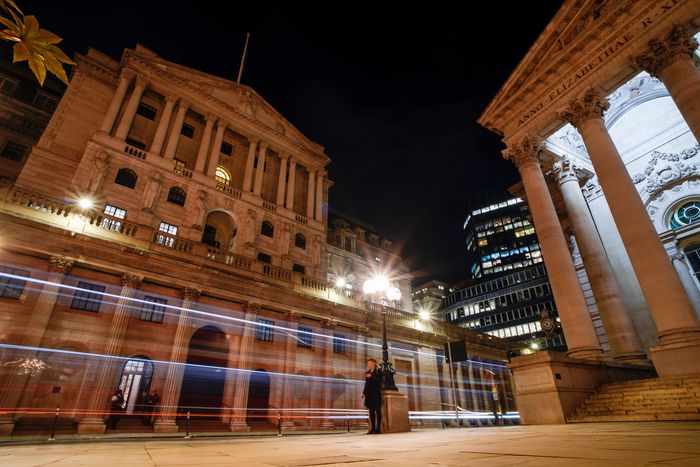The U.K.’s annual rate of inflation returned to double digits in September, cementing expectations of another rise in the Bank of England’s key interest rate early next month even as the medium-term outlook for prices has been clouded by changes in government policy.
The sharp rise in world energy prices since Russia’s invasion of Ukraine has pushed the U.K.’s inflation rate to four-decade highs, and prompted the BOE to raise its key interest rate more aggressively than it had planned before the war.
The Office for National Statistics said on Wednesday that consumer prices were 10.1% higher than a year earlier, a faster rate of inflation than the 9.9% recorded in August and back to July’s level, which was the highest in 40 years.
That was a higher rate of inflation than the 8.2% recorded in the U.S. over the 12 months through September, but below the 10.9% rate recorded in Germany for the same period.

The Bank of England recently raised its key interest rate more aggressively than it had planned.
Photo: Alberto Pezzali/Associated Press
The BOE’s Monetary Policy Committee has indicated that it will raise its key interest rate for the eighth time in as many meetings when policy makers announce their next decision Nov. 3.
“September’s consumer prices figures maintain the pressure on the MPC to hike bank rate substantially at its next meeting, despite the developing recession,” said Samuel Tombs, an economist at Pantheon Macroeconomics. “The MPC still is a long way from being able to claim victory.”
The U.K.’s central bank first raised its key rate in December 2021, three months before the Federal Reserve began to lift its key rate. The Fed has moved more quickly, and its key rate now stands at between 3% and 3.25%, while the BOE’s key rate is 2.25%.
Recent reversals in government policy have clouded the outlook for U.K. inflation and interest rates. The government announced a package of tax cuts on Sept. 23 that the BOE saw as likely to lead to higher inflation than it had expected to see when it last released forecasts, and a larger rise in its key interest rate.
“As things stand today, my best guess is that inflationary pressures will require a stronger response than we perhaps thought in August,” BOE Gov. Andrew Bailey said Saturday.
However, the government Monday reversed most of those tax cuts, cut the period over which energy prices would be capped for all households to six months from two years, and pledged additional tax rises and spending cuts.
Over the coming months, the energy price cap means that the rate of inflation is set to rise only slightly, with the central bank expecting it to peak at 11% before the end of this year. But many households may now face sharply higher energy bills through much of next year, which would tend to keep inflation high for longer. However, tax rises and spending cuts will likely have the opposite impact on inflation beyond 2023.
“Support for household energy bills will become targeted from next April, which will likely mean higher inflation in 2023, but lower inflation in the medium term,” said Abbas Khan, an economist at Barclays.
Copyright ©2022 Dow Jones & Company, Inc. All Rights Reserved. 87990cbe856818d5eddac44c7b1cdeb8
